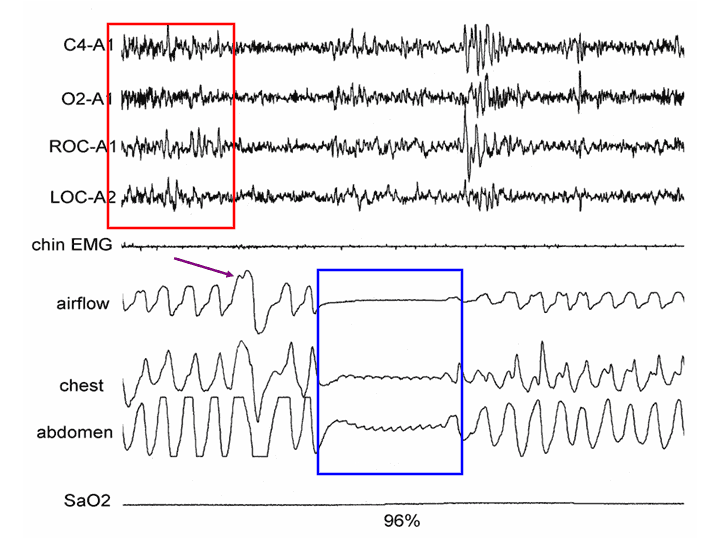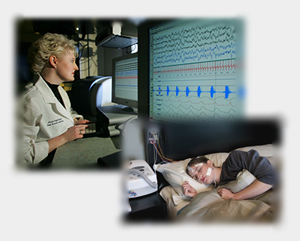The diagnosis of sleep apnea is made by taking your medical and family history, a physical examination, and the result of a sleep test (polysomnography). Your family doctor often performs an initial assessment, and decides whether to refer you for a sleep test or to a sleep specialist. Sleep specialists are doctors who diagnose and treat sleep disorders. They can come from different backgrounds, such as anesthesiologists, lung specialists, internal medicine specialists, and otolaryngologists (ear, nose, and throat surgeons).
History and Physical Assessment
Your doctor will ask you questions about the length and quality of your sleep, symptoms of drowsiness or headache during the day, and how loudly you snore at night. You may need to keep a sleep diary to record what time you went to bed and how often you awoke. This will help your doctor see your sleep pattern. You may not be aware of symptoms that occur when you sleep, such as if you stop breathing or gasp, and a bed partner or family member may need to report them.
Your doctor will examine your mouth, throat and neck for enlarged tissue or the structure of your palate and uvula that may predispose you to a narrowed airway.
Sleep Study
A sleep study is the most accurate way to diagnose sleep apnea. It is an evaluation of your breathing and body functions overnight. There are two types of sleep studies: Polysomnography and home-based portable monitor.
Polysomnography (PSG) is a sleep study performed in a specialized sleep center where your brain activity, eye movements, and vital signs such as heart rate and blood pressure are recorded. In addition, they measure the oxygen level in your blood, airflow in your nostrils, chest movement, and snoring. Sometimes a video records your movements during sleep. The test is painless and these measurements are made through sensors attached to your face, chest, scalp, and fingers. A PSG is recommended for complex cases or for patients with other medical conditions.
The test records:
- The number of times you stop breathing for at least 10 seconds (apnea)
- The number of times your breathing is partially blocked (hypopnea)
The Apnea-Hypopnea Index (AHI) is the number of apnea or hypopnea episodes you have in one hour. The AHI results are used to diagnose sleep apnea.
A normal test result will show:
- AHI less than 5 (less than 5 episodes of apnea or hypopnea in an hour)
- Normal brain waves and muscle movements when you sleep
An AHI greater than 5 may mean you have sleep apnea:
- Mild sleep apnea: AHI 5-15
- Moderate sleep apnea: AHI 15-30
- Severe sleep apnea: AHI greater than 30 [7]
The final diagnosis and recommendations for treatment will also depend on:
- Your medical history and symptoms
- Other findings from the sleep test
- Your physical examination
A home-based test is a simplified test done with a portable monitor that measures some of the same things as a PSG study. This is less expensive and allows the test to be done in the comfort of your own home. It is often recommended for patients with severe symptoms who have no other serious medical conditions that can interfere with the test results.
The results of the PSG or home-based sleep test are analysed and interpreted by a sleep expert who will then meet with you to discuss the diagnosis. If you are diagnosed with sleep apnea, the sleep medicine physician with discuss the treatment options with you.
Screening Tests
Several screening questionnaires for sleep apnea exist. One of the most popular is the STOP-Bang questionnaire. More information can be found on the next page.


